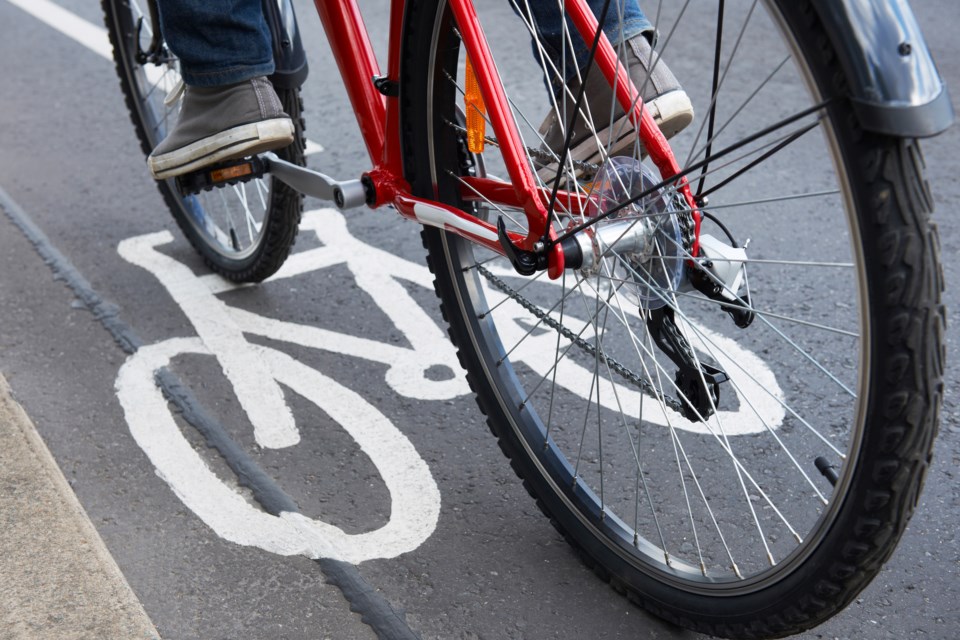BradfordToday and InnisfilToday welcome letters to the editor at [email protected] or via the website. Please include your full name, daytime phone number and address (for verification of authorship, not publication).
I am disappointed in the province’s decision to require approval of any new bike lanes that take away from space for cars.
This decision will not only negatively affect cyclists; it affects all people who live in cities. While adding bike lanes has an obvious goal of building out cycling networks, they can also be used to serve a different function, which is less well known.
Adding bike lanes to a road can also be a simple, cost-effective tool to reduce the design speed of a road. Design speed is the speed that an average driver would feel comfortable driving on a road. Design speeds often differ from the legal posted speed limits. (See chart below from Orillia Engineering Guide.)

Lane width is one of the main components of design speeds. (See chart below from nacto.org/publication/urban-street-design-guide/street-design-elements/lane-width.) The wider a lane is, the more it encourages higher speeds.

Since the car boom after the Second World War, we’ve built big, wide streets with multiple lanes and wide driving lanes to accommodate the drivers on them. What we did not know then is that these wide streets encourage dangerous and reckless driving when congestion wasn’t around to slow people down.
One way to reduce speeds on overbuilt roads (roads designed with too high a design speed) is to reduce the number of driving lanes and/or make existing lanes narrower. This is where adding bike lanes can be very useful. You don’t have to do any very expensive construction like tearing up a street to extend the curb or change the physical shape of the street to narrow it. You can simply repaint the lines on a street to make the lanes narrower and add bike lanes on the side. These fixes are fast, inexpensive and effective at reducing speeds.
An example of an overbuilt road in Orillia is the north part of Park Street. A standard city car lane is around nine to 12 feet wide. Each lane on the north part of Park Street is about 17 feet wide. It feels like driving on a highway. Compare that to downtown on Mississaga Street, where driving 40 km/h feels normal. Driving 40 km/h on Park Street would feel painfully slow. If you don’t believe me, try it yourself.
Two of the most common things I hear on OrilliaMatters, an affiliate of BradfordToday and InnisfilToday, is that speeding is an issue in Orillia and that we need fiscal responsibility. Repainting roads with bike lanes helps reduce speeds at a low cost to the city. The decision by the provincial government to take this tool away from cities will slow cities’ ability to make their streets safer for everyone and will force cities to use more expensive traffic-calming measures.
Scott Ballon
Orillia



